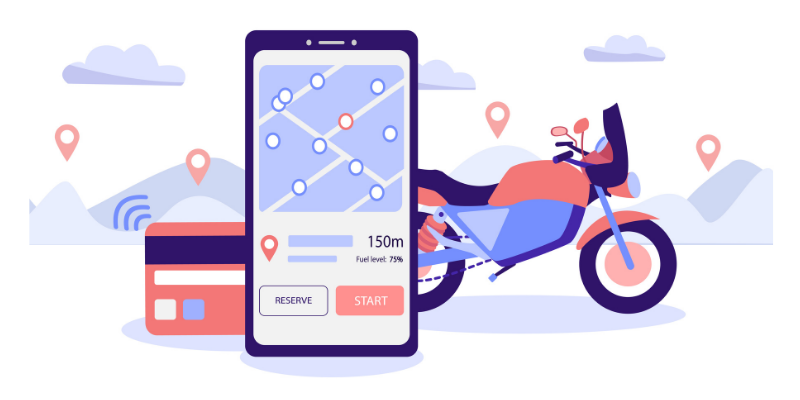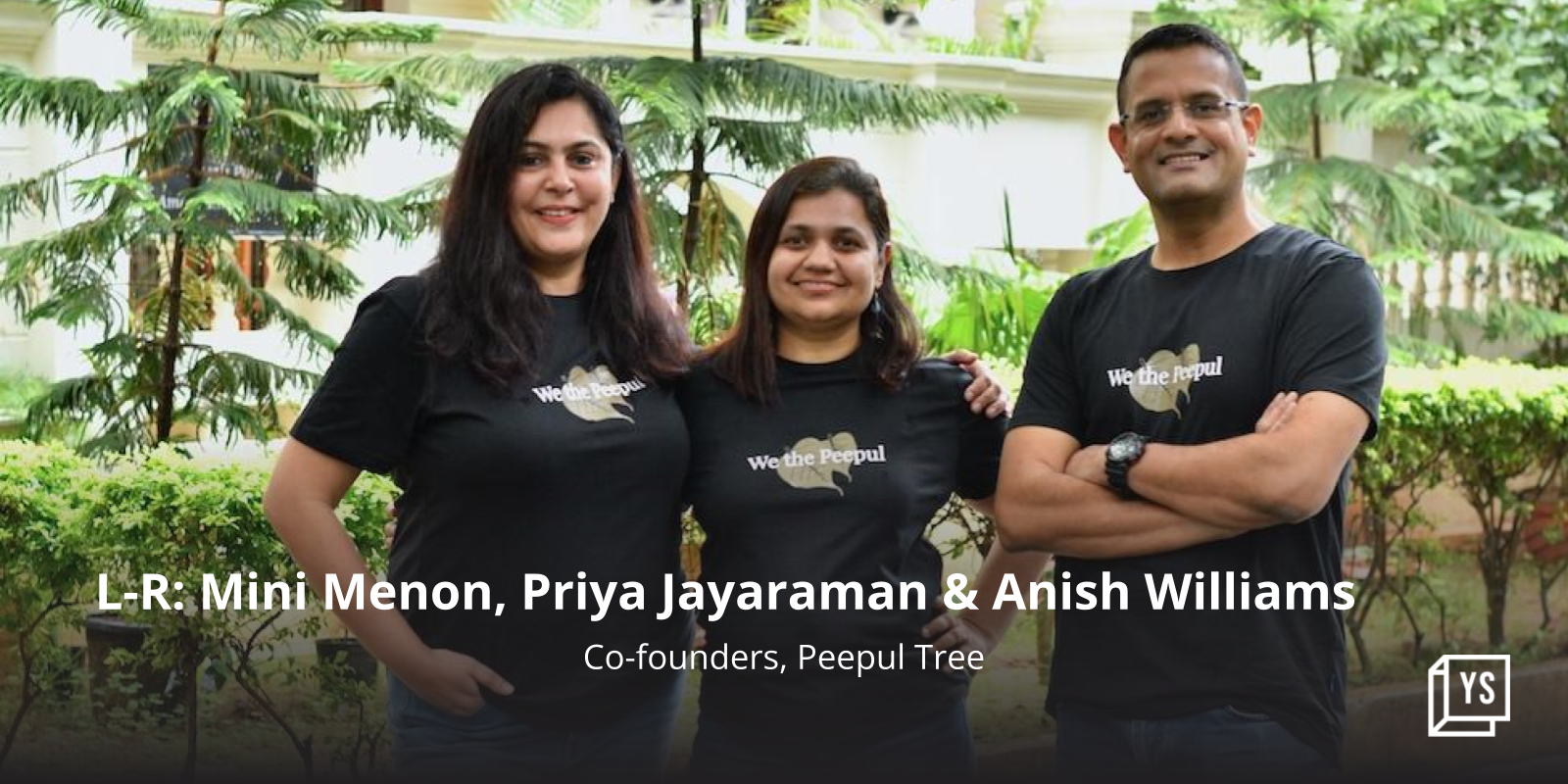From Internet of Things to Insights of Things – 14 design tips by Doug Beaudet, VP Experience Design, Honeywell
The startups of today will be the incumbents of tomorrow. Here are 14 tips to ensure that you retain your design edge across successive waves of disruptive innovation.

Doug Beaudet is the Vice President for Global Experience Design at Honeywell. He was earlier Global Director for Experience Design at Whirlpool and Senior Research Programme Manager at Eastman Kodak.
Doug, who graduated from Virginia Tech and University at Buffalo, spoke at SAP Labs’ recent Design Talks meetup in Bengaluru on how innovation is driven by core technologies, connected components, and effective design. Here are 14 takeaways from his interactive session, moderated by SAP’s design evangelist Visvapriya Sathiyam.
This post is part of YourStory’s d-Zen (‘design Zen’) series of articles. See also the design tips by digital media guru Monika Bielskyte on creating worlds with VR and AR, and practitioner insights from the Design4India and DesignUp conferences.
- Industry benchmarks are now from the consumer sector
Consumer sector products such as smartphones are now setting the design bar for industrial product manufacturers. Industrial designers also want their products to look and feel as cool as the iPhone – because more and more consumers are using smartphones and apps.
Industrial products need to be accessible and monitored via apps. Many of Honeywell’s products such as air purifiers now have an app interface with dashboards and control features. The company is now trying to be the “Apple of the industrial sector”, Dough explained.
- Design is now connected
We are living in a world of increasingly connected devices and environments, thanks to IoT and ubiquitous wireless networks. “Customer insights are the true enabler of connected devices,” said Doug. (See also my reviews of the books Connected by Design and Code Halos.)
He drew on Honeywell’s extensive work in emerging models of connected homes, intelligent factories, and smart buildings. Impacts of connected design range from security and safety to productivity and new services.
- Use design to reduce complexity
Design is not just about what a product looks like or about creating consumer desire, but how easy it is to use, maintain and repair. “Design is not just a shiny object,” said Doug.
Early air purifiers were complicated to maintain, and required lots of tools and manuals. Honeywell’s new purifiers have back covers that can be easily unhinged. There are indicators that reflect what the air quality is inside and outside the rooms, and remote-control options via apps. There also reminders for filter replacement. The product in China is sold through locally popular channels such as JD.com.
- Leverage data to synthesise better products
Data can be integrated from multiple sources to present unified views of a setting. Honeywell has designed heads-up displays (HUD) for pilots that can be used even during conditions of fog and haze.
Such synthetic vision systems increase situational awareness. Impacts include increased safety for pilots and passengers, less flight delays, and less congestion at airports.

- Increase design sensitivity
Not everyone will take up design as a career, but it is imperative for techies and managers to understand the importance of design and how to work with designers. It is important to not just build a design team, but ensure that the value of design is appreciated across the organisation, via coaching and workshops.
Honeywell was founded in 1906, but added a formal design department only in 2012. It now has 300 designers in 12 studios across cities such as Seattle, Austin, Phoenix, Mexico City, Beijing, Shanghai, Hyderabad, Bengaluru, Sydney, and Brno. The company also invests heavily in coaching general managers about design.
The design team should work with business leaders and operational managers to build an internal language of design, and bake it into existing processes, structures and tools. For example, there should be commonly agreed upon formats for customer journey maps and stakeholder engagement.
- Locate design close to business touch-points
It is okay to have a design headquarter or studio, but it also helps to have design teams close to customer locations where products are being co-visioned and prototyped. Design should be close to process and partners in action.
Being remote robs designers of precious insights, and can even come across as elitist, Doug cautioned. “The most important skill for designers is to listen,” he said. It is important to see how customers actually use and even abuse your products, he joked.

- Design for knowledge management
Many large companies have internal tools for collaboration and knowledge sharing that are "horrible" as compared to the new sleek and intuitive cloud-based platforms. Internal tools should be designed so that they are easy to use and learn, advised Doug.
Knowledge sharing and retention in companies is becoming a priority as attrition rates increase and innovation cycles speed up. “The treadmill is going faster, and expectations from employees and customers are going up,” Doug observed .
Good ideas and practices need to be shared quickly and effectively. “If you want your ideas to be followed, just give them away and someone else will adopt them. Make your idea someone else’s idea,” Doug advised.
“Design is never completely done. It is more like cricket than baseball,” he joked. Companies should be prepared to have long conversations about design, and many decisions that seemed premature should be revisited when contexts change.
- Connect to larger user needs and aspirations
Instead of describing your products in terms of features or looks, connect to a broader citizen aspiration. “I want to wake up to a clear day, every day” is a powerful pitch as well as aspirational connect to customers who want clean and pure air – a much better positioning for products like air purifiers.
- Get insights about competitor products
Much has been said about connecting to existing customers and anticipating their needs. But you may actually learn a lot from the customers you never had. Why are they using your competitors’ products? What design do they have that your products don’t?
“Find out why you lost customers. Benchmark against competitor products, and increase your competition awareness,” Doug advised.
- Get insights about new trends
If you miss emerging trends, you may miss how to position your product or create new ones. For example, many online business models were based on having information archived permanently (e.g. search) – but there are also new models based on ephemeral or transient information (e.g. Snapchat).
Some business models are based on intrusive ads, others are based on subscription but are devoid of ads. Each has different connotations for how the business model and partner alliances should be designed (see my book review of Trend-Driven Innovation).
Trends are coming faster and faster. Just a couple of years ago, speech interfaces were not featured much at leading events like Consumer Electronics Show (CES) – but last year voice interfaces were a dominant feature. “There were even toilet seats that could talk to Alexa,” Doug joked.

- The secret sauce: from good to awesome
Many products across competitors actually have 90 percent similarity. “The secret sauce is what takes you from good to awesome,” said Doug. The real differentiator is customer experience impact.
For design to be truly sustainable and successful, such capabilities should have support right from the highest levels of organisational leadership. In situations where multiple business partners are collaborating on customer solutions, the customer’s voice is the tie-breaker in case of conflicting design decisions.
- Give back to the community
Design is a long-term competency for society, and designers need to step out of their organisational roles and give back to the community. There are a number of design meetups where established and emerging designers share lessons with peers.
For example, cities like Bengaluru have a growing number of forums such as the annual Design Thinking Summit and quarterly Design@Business meetup.. Such forums are also great for mentoring and ‘reverse mentoring’ opportunities.
- Innovation and disruption
Startups are disrupting a range of consumer and industrial sectors. For example, Nest Labs (founded by former Apple designer Tony Fadell, regarded as one of the fathers of the iPod) designs elegant smart thermostats that come with multiple sensors (e.g. motion detection) and predictive analytics.
Disruptive technologies, even if invented by the incumbent, are risky because of low quality during initial stages, customer adoption uncertainty, and cannibalisation of existing revenue streams. The current crop of customers and distributors may themselves not appreciate the new products; hence, their insights may bias the incumbents into staying the course.
Innovation and design teams, therefore, need to come out of their complacent comfort zones and blind spots. Even market leaders must challenge themselves — or they will be challenged by newbies. “You can’t expect everything to last forever. The innovator’s dilemma will come to you, even if you are not aware of it,” Doug signed off.








![[Funding alert] InnoVen Capital invests Rs 25 Cr in consumer electronics startup boAt](https://images.yourstory.com/cs/2/11718bd0-2d6d-11e9-aa97-9329348d4c3e/Image55f31563363798309.jpg)


![[Funding alert] Electric vehicle startup Simple Energy in talks to raise $1M](https://images.yourstory.com/cs/2/11718bd02d6d11e9aa979329348d4c3e/Imagehrn6-1595836341886.jpg)
